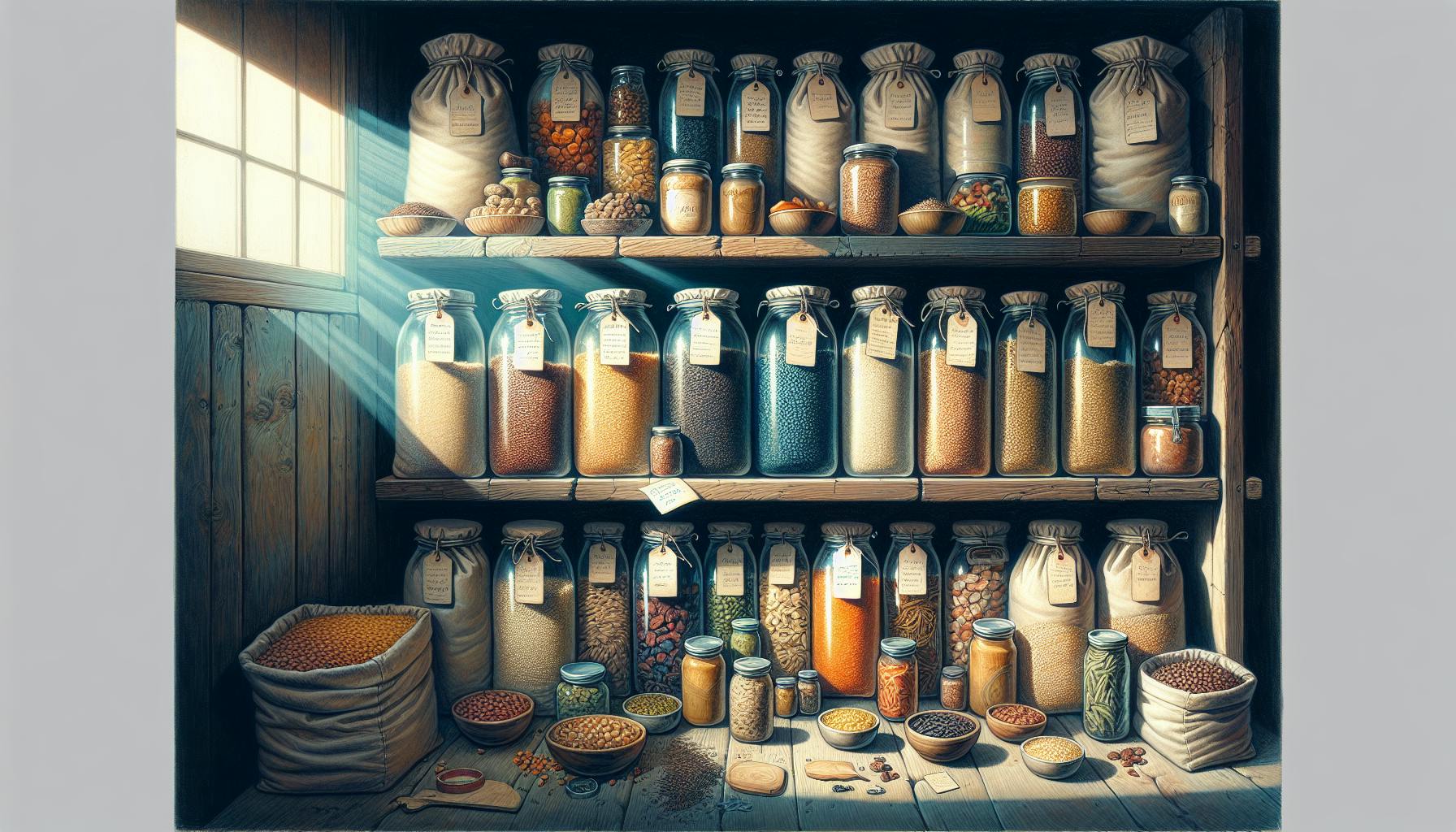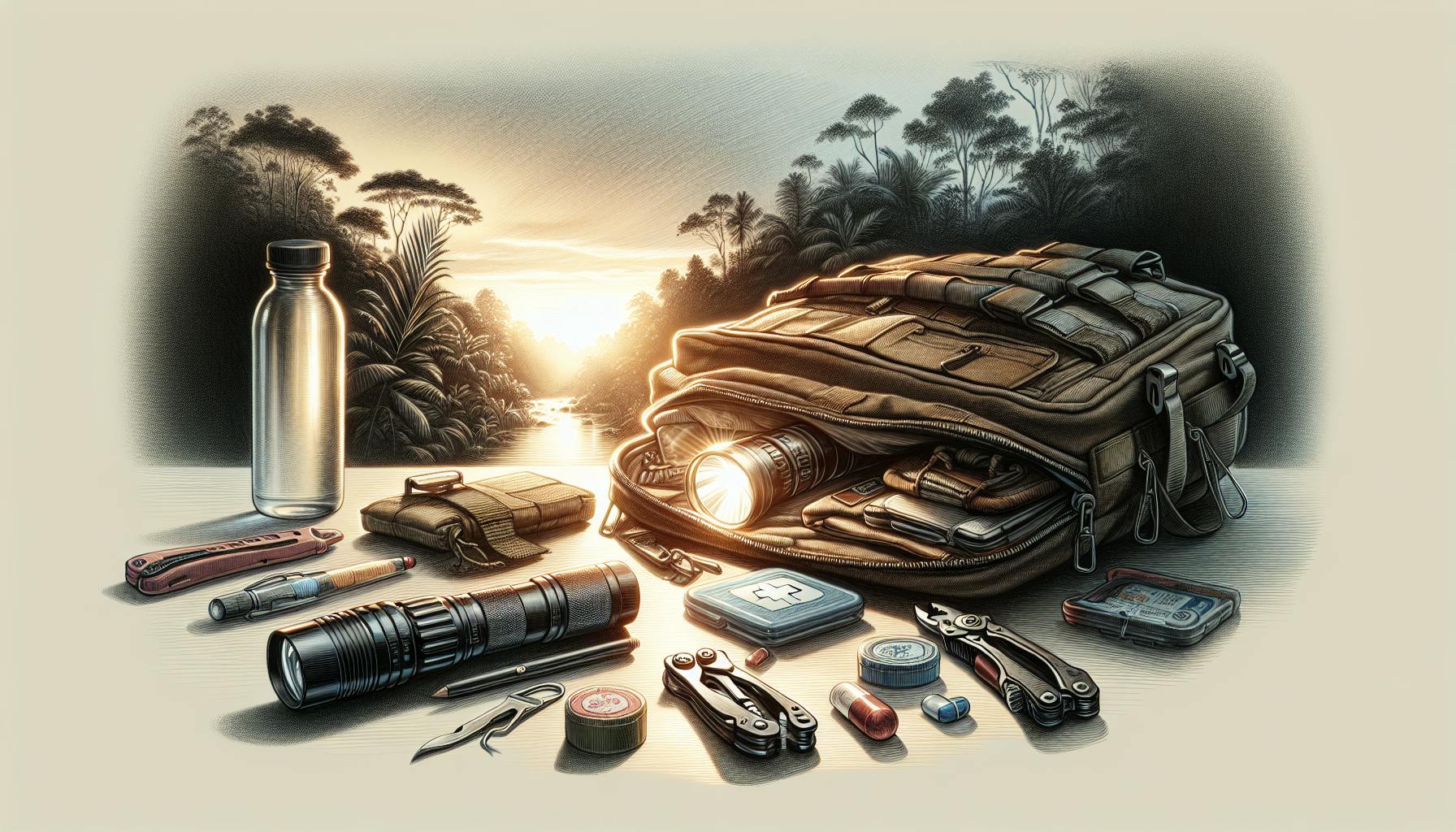When preparing for emergencies, we all want to have adequate survival food on hand.
This guide compares top brands of survival food for sale, analyzing their pros and cons so you can make an informed decision.
We'll explore key criteria like shelf life, taste, cost, and nutritional value to determine the best emergency food kits to stock up on.
Introduction to Survival Food Options
Survival food is an essential component of emergency preparedness kits. Having a reliable stockpile of food supplies in case of disasters or emergencies allows you to provide for yourself and your family when stores are closed or supply chains are disrupted. This article compares different brands and kits of survival food available for purchase, discussing the key factors to consider when choosing the best options for your needs.
Understanding the Importance of Emergency Preparedness
Emergency food supplies are a crucial part of any preparedness plan. Natural disasters, grid failures, economic collapse - these are rare but real possibilities. Stockpiling food allows you to avoid dangerous supply shortages by having reserves on hand if stores close or delivery trucks can't reach you. The recommended amount is a 3-6 month supply for each family member. This ensures adequate nutrition and avoids desperation if a crisis is prolonged.
When choosing emergency food, key factors include nutritional completeness, calorie density, shelf life, taste, and ease of preparation. The best kits have a balance of staples like grains, legumes, dairy, and freeze-dried or dehydrated fruits/vegetables. Focusing on variety ensures your health and morale.
Criteria for Choosing the Best Survival Food Kits
When comparing survival food brands, keep these criteria in mind:
- Complete nutrition: The food should contain a balanced macronutrient profile with complex carbs, plant/animal protein, healthy fats, vitamins, and minerals. This maintains health.
- Long shelf life: Look for pouches and buckets rated for 20-30 years. This ensures the food will still be viable when you need it.
- Taste and texture: Freeze-dried and dehydrated meals should resemble fresh foods. Better taste means you'll actually enjoy eating it.
- Easy preparation: Just add water for fast, hot meals. No cooking fuel needed.
- Affordable pricing: Buying in bulk brings costs down. Focus on nutritious calories per dollar.
Using these criteria, we will compare top-rated survival food brands like Augason Farms, Mountain House, and Wise Foods to find the best emergency kits to meet your family's needs.
What is the best survival food to stock up on?
When it comes to stocking up on survival food, there are some key categories you'll want to focus on:
Meats & Beans
Canned meats like chicken, turkey, tuna, salmon, and spam can provide valuable protein in an emergency. Canned beans are also great for protein and fiber. Some good options include:
- Canned chicken or tuna
- Spam or other canned meats
- Canned baked beans, kidney beans, black beans
- Canned chili with meat
Fruits & Vegetables
Having nutrient-dense fruits and vegetables on hand is important for health. Go for canned veggies low in sodium as well as canned fruits packed in juice rather than syrup.
- Canned tomatoes, green beans, carrots, peas, corn
- Canned pineapple, peaches, pears, apple sauce
Grains & Comfort Foods
Grains like rice, quinoa, oats, and pasta provide energy-boosting carbohydrates. Comfort foods help lift moods in stressful situations:
- Rice, pasta, oats
- Granola bars, cereal
- Crackers
- Soup mixes
- Coffee, tea
When stocking up on survival food, focus on nutrient-dense non-perishables like canned meats, fruits, vegetables, beans, grains, and comfort foods. Having a diverse range helps cover nutritional needs in an emergency. Consider creating a 25-year emergency food supply or shop survival food kits from trusted brands like Augason Farms and Mountain House.
What survival food has the longest shelf life?
Freeze-dried meat has the longest shelf life of any survival food, with a shelf life of over 25 years when stored properly. This makes it an essential component for a long-term emergency food supply.
Some key benefits of freeze-dried meat for survival include:
- Extremely long shelf life: With a shelf life of 25+ years, freeze-dried meat far outlasts other survival foods. You can store it for decades and still have nutritious meat when you need it.
- Lightweight and portable: Freeze-dried meat is very lightweight, making it easy to transport and stockpile. A little goes a long way in terms of calories and protein.
- Convenient preparation: Rehydrating freeze-dried meat is simple - just add hot water. Within minutes, you'll have meat ready to eat or incorporate into recipes.
- Nutritious: Freeze-dried meat retains most of its nutritional value, including protein, vitamins, and minerals. It provides essential nutrition when fresh meat isn't available.
With its extraordinarily long shelf life, freeze-dried meat is quite simply the best option for ensuring you have a lasting supply of nutritious meat. Brands like Mountain House and Augason Farms offer high-quality freeze-dried meats worth stocking up on. When building your survival food supply, freeze-dried meat is a must-have.
What food is best for long term survival?
When it comes to stocking up on survival food for long term emergencies, there are a few key things to consider.
Canned and Dried Goods
Canned meats like tuna, chicken, and spam can last for years and provide protein. Canned fruits and vegetables are also good options. As for dried goods, rice, beans, pasta, oats, and powdered milk have long shelf lives. These items are versatile, nutritious, and affordable.
Freeze-Dried and Dehydrated Foods
Freeze-dried foods from brands like Mountain House and Augason Farms retain 98% of their nutritional value. Though more expensive, they offer lightweight portability and long 25-year shelf lives. Dehydrated fruits and vegetables are also great for vitamins and fiber.
MREs
MREs or Meals Ready to Eat contain full entrees with sides and desserts. They last for 5+ years and require no preparation other than heating. While heavy, MREs provide convenient, balanced meals. Popular brands include SOS Food Labs and Xpert Foods.
The best emergency food combines variety, nutrition, affordability, and a long shelf life. Mixing canned goods, freeze-dried meals, MREs, and more creates a well-rounded stockpile.
How does survival food last 25 years?
Most survival food companies use advanced food preservation techniques like freeze-drying and dehydration to extend shelf life. This removes moisture, preventing spoilage and bacterial growth.
The specific steps taken include:
- Carefully selecting high-quality ingredients
- Washing and preparing foods to maximize nutrient retention
- Using commercial dehydrators or freeze dryers to remove up to 98% of the food's moisture
- Vacuum sealing or nitrogen flushing pouches to prevent oxygen exposure
- Storing in climate-controlled warehouses to prevent temperature fluctuations
With proper processing and storage methods, it's possible to achieve 25+ year shelf lives for many survival food products. However, taste and texture can degrade over time. Following best practices for long term food storage helps ensure your supplies will be nutritious and safe to eat when you need them.
Testing food over time and rotating stock also helps. With care and planning, you can build an emergency food supply to feed your family through any disaster.
sbb-itb-b932644
25-Year Emergency Food Supply Options
When it comes to emergency preparedness, having a long-term food storage solution is essential. A 25-year shelf life allows you to buy in bulk, save money, and ensure you have sustenance for your family during an extended crisis. In this section, we'll explore some top brands that offer emergency food kits designed to last 25+ years.
Augason Farms: A Pioneer in Long-Term Food Storage
Augason Farms is one of the original long-term food storage companies. They offer a wide variety of emergency food kits with up to a 30-year shelf life.
Their food tastes better than most survival food brands thanks to extra care in ingredients and preparation methods. For example, their breakfast skillet kit includes freeze-dried scrambled eggs with onions, green peppers, diced ham, and hash browns. Just add water for a hearty meal reminiscent of diner-style fare.
With meal options ranging from pasta primavera to cheesy broccoli soup, Augason Farms provides enough variety to keep your family satisfied during an extended crisis. Their 1-year food supply kit for a family of four costs around $1,700.
Mountain House Emergency Food Supply: Taste Meets Longevity
Mountain House has perfected the process of freeze drying, allowing them to offer high-quality ingredients that retain flavor exceptionally well over long periods of storage. Their pouched meals and food buckets reliably last 25+ years.
A standout option is Mountain House's classic bucket. It includes user favorites like beef stroganoff, chicken teriyaki, and sweet and sour pork with rice. At around $350 for a one-month supply, it provides gourmet flavor at a reasonable price point.
One downside is that Mountain House's offerings aren't as varied as other brands. However, their exceptional taste makes up for the smaller menu.
ReadyWise Emergency Food Supply: Balancing Cost and Quality
For budget-focused preppers, ReadyWise hits a nice balance between cost and quality. Their 25-year, 1-month food kit for $150 offers staples like rice, beans, oats, milk, and freeze-dried meats and veggies.
While not as tasty as Mountain House or diverse as Augason Farms, ReadyWise provides straightforward, nutritional basics to sustain a family during hard times. They frequently run promotions like buy-one-get-one free, making it affordable to stock up. Their combo bucket with 120 servings costs around $250 regularly but can be snagged for $125 with current deals.
When choosing a long-term emergency food supply, assess your budget, taste preferences, and variety needs. With options like Augason Farms, Mountain House, and ReadyWise, you can find a 25-year food storage solution tailored to your situation.
Best Survival Food Kits for Immediate Needs
Survival food kits designed for short-term emergencies provide critical nourishment when you need it most. Assembling your own custom survival food supply can be time-consuming, so opting for a pre-made kit is often the best option to ensure immediate preparedness.
When selecting an emergency food kit, key factors to consider include:
- Shelf life - Many kits offer 5+ years of shelf life. Prioritize longevity.
- Calorie count - Kits should provide adequate calories (1,200+ per day) for energy.
- Portion sizes - Individual pouches make portion control easier.
- Taste - Look for kits with tasty, familiar meal options to boost morale.
- Affordability - Bulk options can provide savings for families and groups.
Costco Survival Food: Bulk Options for Immediate Preparedness
For those looking to buy in bulk for household or group preparedness, Costco offers affordable 25-30 year survival food kits including popular brands like Thrive and Mountain House.
Costco's selection provides good value with options like:
- Thrive 1-year food supply bucket (84 servings) for $100
- Mountain House Essentials Bucket (96 servings) for $130
Pros of Costco bulk buying:
- Bulk pricing saves up to 30% over individual pouches
- Long 25-30 year shelf life
- Reputable brands like Thrive & Mountain House
Cons to consider:
- Large upfront cost for buckets
- Limited meal variety in base kits
Overall, Costco offers reliable emergency food kits for the whole family or group at bulk pricing. The 25-30 year shelf life ensures long term preparedness.
MRE Survival Food: The Military-Grade Choice
MREs (Meals Ready to Eat) are portable, rugged meals designed for soldiers, but civilian preppers have adopted them for their practicality.
Some benefits of MRE survival food packs:
- Long 5+ year shelf life if stored properly
- 1,200+ calories per meal for energy
- No preparation needed - ready to eat
- Packaged to withstand extreme temperatures
Downsides of MREs include:
- Expense per meal compared to bulk options
- Limited meal selections in cases
- Packaging creates more waste
MREs make a durable, no-fuss emergency food option. While pricier, their resilience and calorie density make them a practical backup food supply. Choosing variety pack cases provides more meal options.
Emergency Food Supply for a Family of 4
When preparing an emergency food supply for a family, it's important to calculate adequate quantities, account for variety and nutritional needs, and choose kid-friendly options.
Calculating Adequate Food Quantities for Family Emergencies
To determine the right amount of survival food for a family of four, consider different emergency scenarios and recommended daily calorie intake. On average, adults need 2,000-2,500 calories per day, while children need 1,200-2,000 depending on age and size. For a short-term, 3-day disruption, a basic starter kit with 18-20 total food servings could suffice. However, for a longer disruption of 2-4 weeks, plan for a more robust supply with a wider assortment of freeze-dried and dehydrated ingredients. When sizing your emergency food reserve, err on the side of caution.
Variety and Nutritional Needs for Family Members
It's important that a family food supply offers nutritional balance across food groups like fruits, vegetables, grains, protein, and dairy. Consider each family member's dietary needs - are there vegetarians, gluten intolerances, or other restrictions? Prioritize non-perishable foods with a long shelf life that pack dense nutrition, like beans, lentils, nuts, seeds, and whole grains. Include comfort foods like pasta, rice, oatmeal, and baking mixes which are filling and kid-friendly. Vitamin supplements can help cover any nutritional gaps.
Kid-Friendly Survival Food Options
When choosing emergency food for kids, opt for familiar flavors and textures they already enjoy at home. Shelf-stable milk, apple sauce pouches, granola bars, peanut butter, boxed mac and cheese, and freeze-dried fruits tend to be reliable hits. Consider adding a few kid-sized MREs (Meals Ready to Eat) which contain foods like spaghetti, chicken nuggets, or pizza pockets which can seem like a fun adventure for children. Bringing elements of normalcy with favorite snacks and meals can provide comfort.
Having the right quantity, variety, and types of food tailored to your family's needs is key to emergency preparation. Build up a diverse reserve focusing on nutrition, shelf life, and tastes family members enjoy.
Practical Tips for Storing and Using Survival Food
Proper Storage Techniques to Preserve Shelf Life
When storing survival food, it's important to follow the manufacturer's storage instructions to maximize shelf life. Here are some best practices:
- Store in a cool, dry place away from direct sunlight and heat sources. The ideal temperature is 60-70°F.
- Check that containers or pouches are undamaged and tightly sealed. Reseal after opening.
- Store food off the floor on shelves or pallets to protect from moisture.
- Use food rotation by date to ensure first-in-first-out usage.
- Some foods may require climate controlled storage to maintain nutritional content over time.
Properly stored, most survival food has a shelf life of 5-30 years. Following guidelines preserves taste and nutrition over the long term.
Incorporating Survival Food into Regular Diets
To get comfortable with survival food, it's a good idea to incorporate it into regular meal planning. Here are some tips:
- Prepare a meal using survival food once a week. Get creative trying new recipes.
- Use survival food when camping or during power outages. This makes it routine.
- Slowly replace some non-perishable pantry items like rice, pasta, oats with survival food alternatives.
- Let family members sample different survival foods to find preferences. Store more of what they like.
Gradually using survival food creates familiarity so it's not a shock in an emergency. Knowing how to cook it is also an important skill.
Emergency Cooking Methods and Considerations
If traditional cooking methods are unavailable, here are some emergency alternatives to prepare survival food:
- A camp stove or charcoal grill can cook most survival foods. Have fuel on hand.
- Self-heating meals only require water activation and 15 minutes to cook.
- Some foods just require boiling water like freeze-dried fruit or dehydrated vegetables.
- If no heat source, some foods like granola, jerky or nuts are ready-to-eat.
When relying on survival food in a crisis, focus meals around what's easiest to prepare with available resources. Having self-heating and no-cook options provides flexibility.
Final Considerations and Recommendations
When selecting survival food, it's important to consider your individual and family needs. Here are some final tips:
Top Picks for Survival Food Brands
Based on our analysis, some top brands to consider include:
- Augason Farms - Offers a wide variety of freeze-dried and dehydrated foods at reasonable prices. Their emergency food kits are very customizable.
- Mountain House - Known for tasty, high-quality freeze-dried meals. More expensive but focus on good flavor.
- Wise Foods - Gluten-free and vegetarian options available. Very long shelf life on their food pouches.
Customizing Your Survival Food Selection
- Take any dietary restrictions into account when choosing brands and meals.
- Consider your climate and ability to store food when deciding on freeze-dried vs. dehydrated.
- Factor in calorie needs based on family members' ages, sizes, and activity levels.
- Taste test brands first if possible to find flavors your family enjoys.
- Create a balanced storage system with variety across food groups.
No matter what brand you choose, customizing your survival food to your family's needs is key to being fully prepared.


